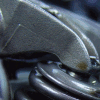Yes boys, I searched. I am having a little bit of an issue keeping my BENs consistent with my IAT sensor getting heat soaked. I know I will always have some heat soak, but Im talking 120*F when ambient is ~70. This happens when I shut it down and let it sit.. Eventutally the IAT comes down to where it should be (also giving me proper BENs) but it takes 5-10 mins of driving.
Now my question is, it there any effective way of tuning this without the use of COS5 table A0014 or reloctating the sensor (I dont believe it would be an accurate example of the air actually entering the throttle body)
Let me know what you guys think,
Thanks!





 Reply With Quote
Reply With Quote





